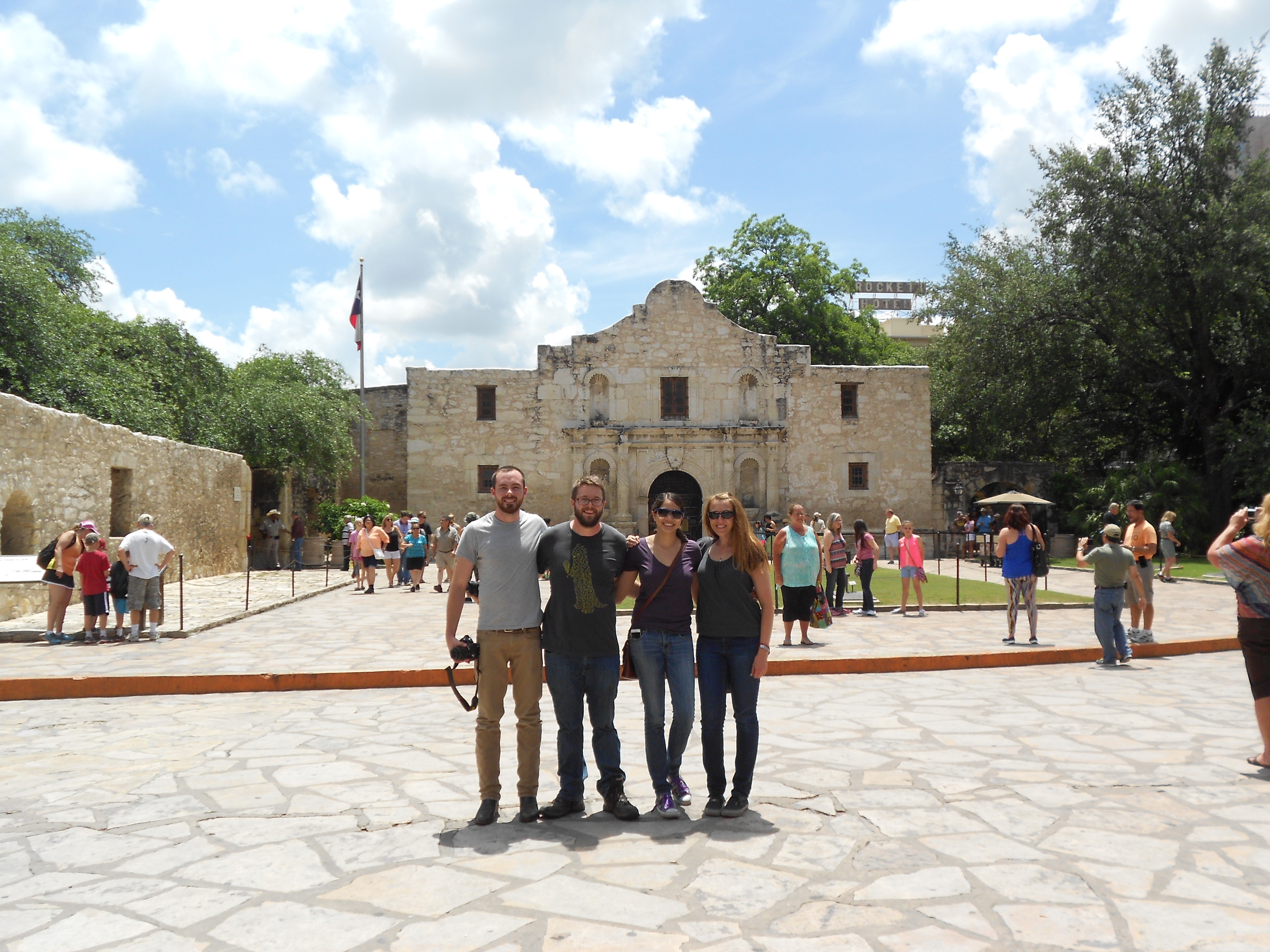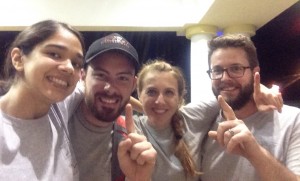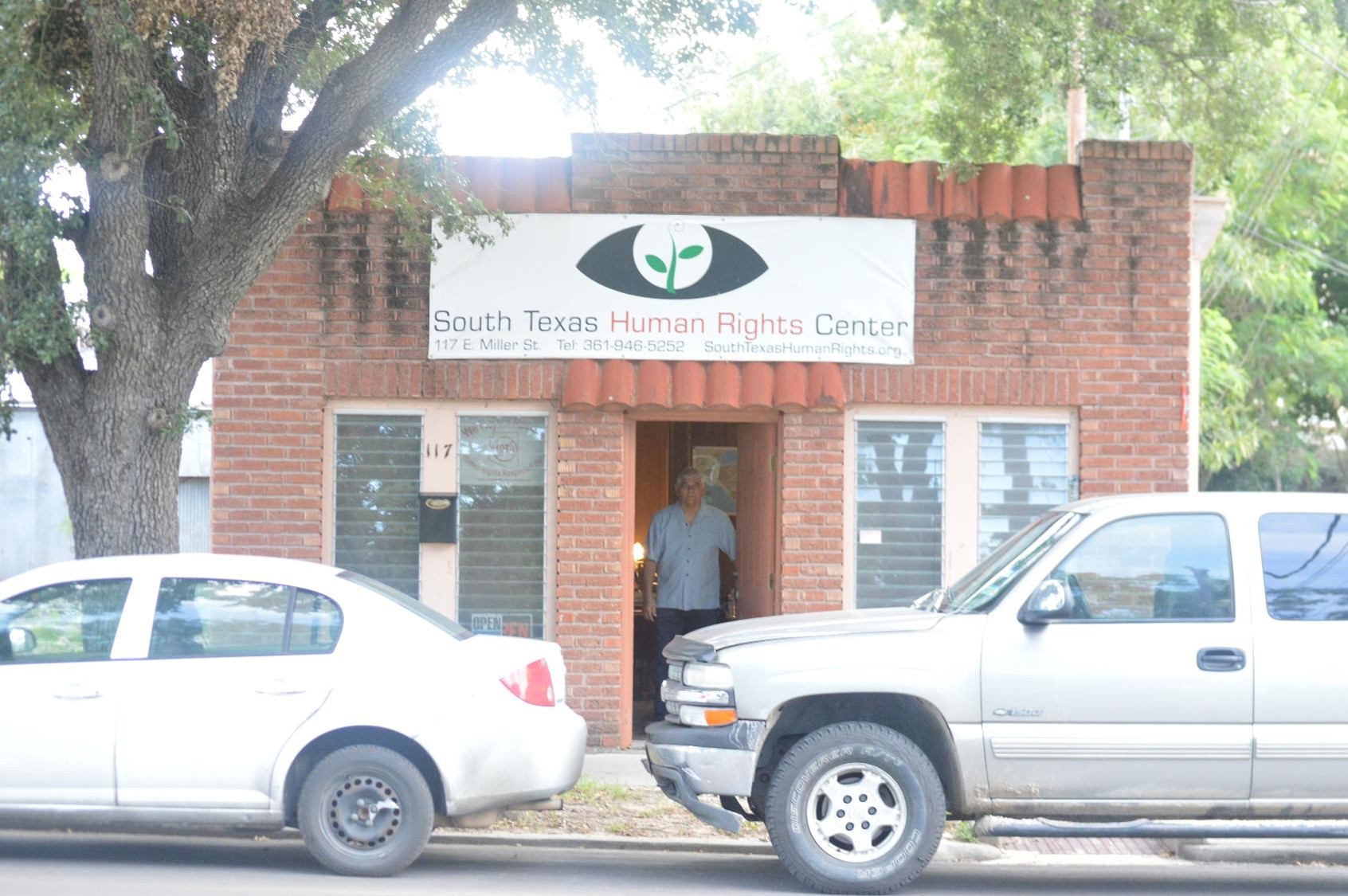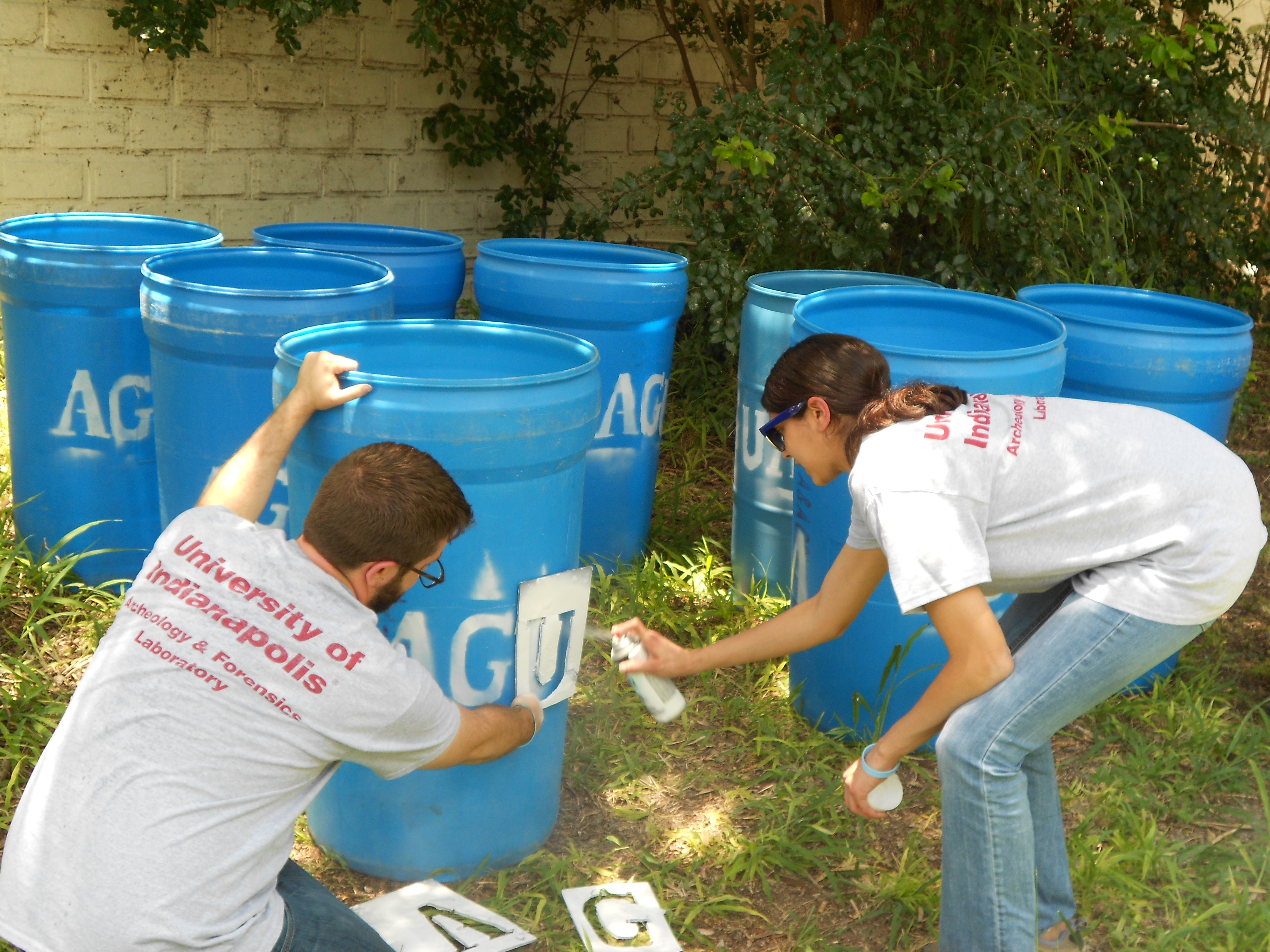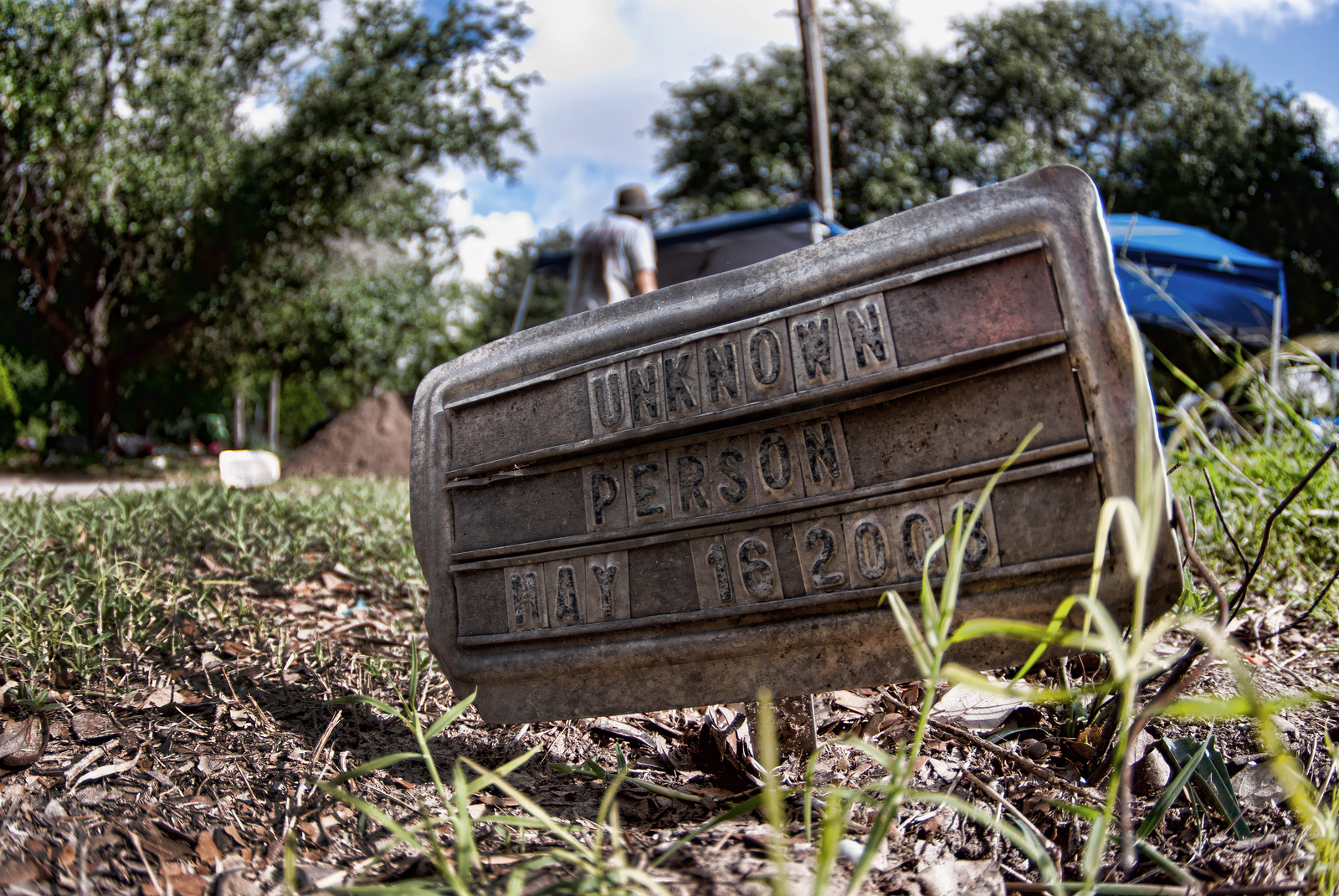My first day in Texas was a whirl wind of activity. After an early morning flight into San Antonio, we still had a three hour drive down to Falfurrias. We piled all of our luggage into the soccer mom minivan that we rented for the trip and hit the road. After about 10 minutes into our drive we saw a sign for the Alamo and decided to take a quick detour. This had been one of the things I wanted to see while I was in Texas, so I was really excited to have a chance to go. The Alamo chapel was a lot smaller than I was expecting it to be, but no less impressive. I’ve only ever seen pictures of the Alamo in text books, so seeing this piece of American history in the flesh, was incredible.
After snapping a few pictures of the chapel, we ventured inside the compound to look at the gardens. We spent some time walking around and looking at the various monuments and plaques that held facts about the Alamo. At the end of this little detour I was beginning to learn how unforgiving the Texas sun could be.
Later that day, after we made it to Falfurrias and checked into our hotel rooms, we made a trip to the La Mota Ranch. The Lasater family owns this ranch and was kind enough to invite us all over for dinner that night. For those of you who don’t know, the Lasater family founded the town of Falfurrias. This family also owned and founded a creamery that produced Falfurrias Butter. It’s this butter that made the town a familiar name across the state. The modern day Lasater’s are a very charming couple. They wowed us with good food and tales about their adventures around the world.
At some point in the night the conversation turned over to the issue that has been plaguing the Falfurrias community over the last couple of years. The Lasaters began to share their experiences with the undocumented border crossers they had come across on their ranch. They expressed nothing but concern for the people who were technically trespassing on their property. While listening to these stories, it hit me then how deeply this affects the entire Falfurrias community. It’s not just the UBCs, forensic scientists, investigators, and other legal entities that are affected by this issue. It’s everyone. This crisis affects all the ranch owners and everyone who is working to find a solution to end this crisis.
